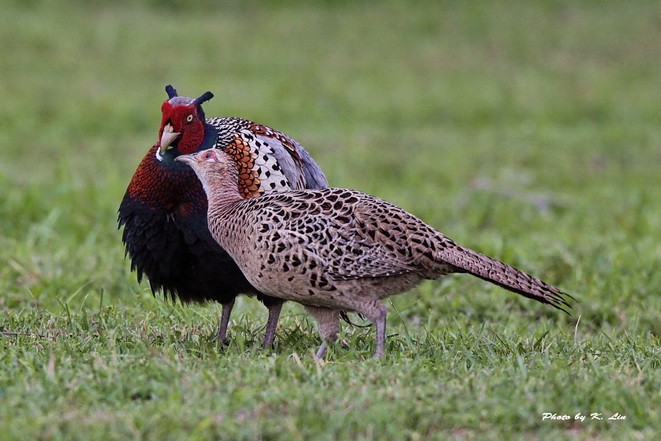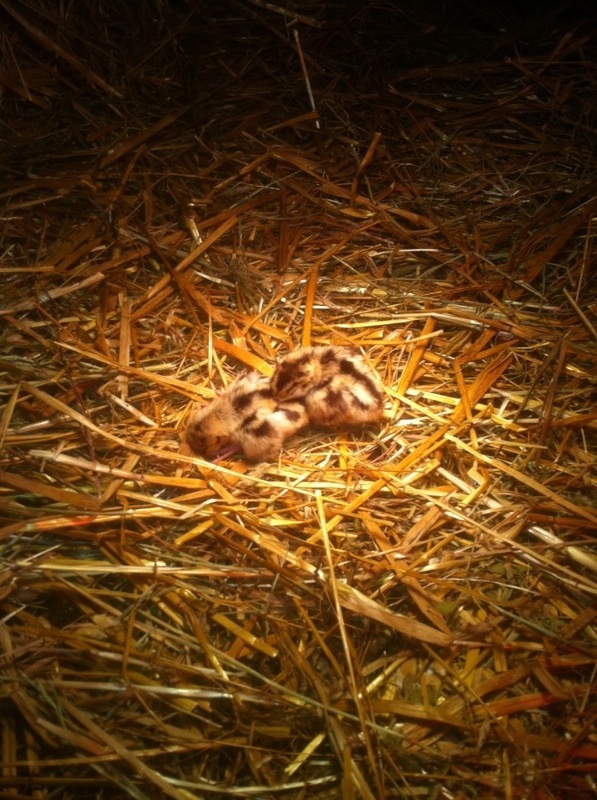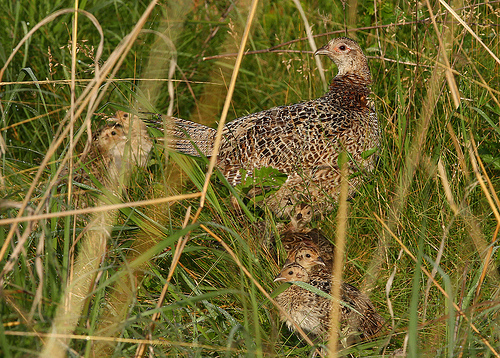Reproduction
The Phasianus colchicus reproduces sexually. The male
ringed-neck pheasants or cocks, leave their winter home range in
late March to early April to establish their breeding
territories. The older females, or hens leave their winter range
a few weeks after the cocks to return to their previous summer
range that is within a cock’s breeding territory. The
younger hens tend to wander around before settling into a cock’s
breeding territory (Riley and Schultz, 2001). The cocks become
very aggressive during the breeding season. They strut by
puffing up their brightly colored feathers and crow
to discourage any other males from intruding into their breeding
territory as well as to attract some of the younger hens that
are not sure where they want to settle down. A cock pheasant
tries to acquire a harem of up to twelve hens (Riley and
Schultz, 2001).
 Hen pheasants
nest on the ground and they typically begin building nests in
overgrown pastures and hay fields in May. A pheasant nest is a
depression in the ground that is lined with feathers and grass.
On average it takes a hen around 16 days to lay a clutch of
eggs. Clutch sizes vary, but normally consists of 7-16 eggs, and
incubation takes around 23 days. When you factor together how
long it takes a hen to lay a clutch of eggs, and the incubation
period, this buts the hatching of the chicks in June. One
adaptive advantage that the ring-necked pheasant has is that if
a nest or clutch of eggs are eaten or destroyed, a hen will
often reattempt to nest up to four times throughout the summer.
As a result of this, pheasant chicks can hatch anytime between
June and September (Riley and Schultz
Hen pheasants
nest on the ground and they typically begin building nests in
overgrown pastures and hay fields in May. A pheasant nest is a
depression in the ground that is lined with feathers and grass.
On average it takes a hen around 16 days to lay a clutch of
eggs. Clutch sizes vary, but normally consists of 7-16 eggs, and
incubation takes around 23 days. When you factor together how
long it takes a hen to lay a clutch of eggs, and the incubation
period, this buts the hatching of the chicks in June. One
adaptive advantage that the ring-necked pheasant has is that if
a nest or clutch of eggs are eaten or destroyed, a hen will
often reattempt to nest up to four times throughout the summer.
As a result of this, pheasant chicks can hatch anytime between
June and September (Riley and Schultz , 2001).
, 2001).
A few hours
after the chicks hatch, they are able to run around and eat. The
hen is very protective and caring for her young, she broods, or
hovers over her young for the first three weeks (Riley and
Schultz, 2001). The hen and the chicks stay within a few hundred
feet of the nest during the first few weeks, because the chicks
are not able to move very fast or fly, so they best defense
against predation is limiting their movement to avoid detection.
Around six weeks of age, the chicks begin to develop adult
plumage, especially the males. At this stage the chicks are
extremely motile. They can’t fly or run as long or fast as their
adult parents, but they are not far behind them. By one year of
age, the chicks are sexually mature adults (Riley and Schultz,
2001).
Now you know how pheasants interact with each other but do you know what other species the ring-necked pheasant interacts with? Click Interactions to find out!

